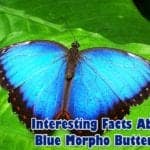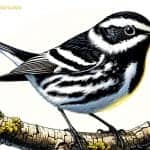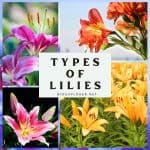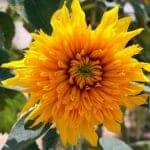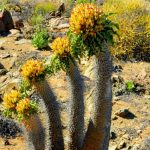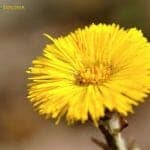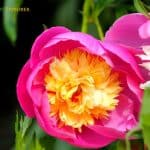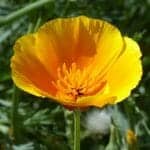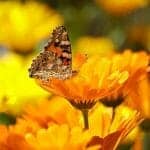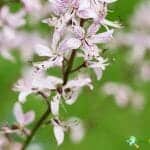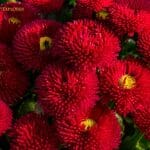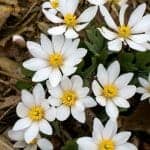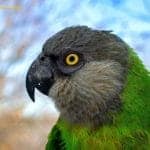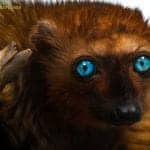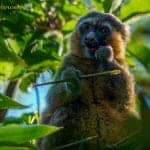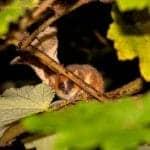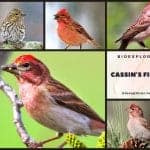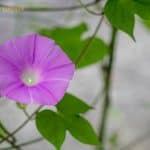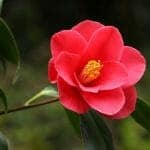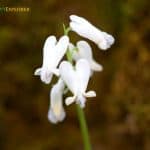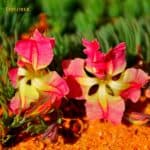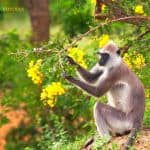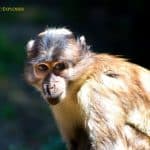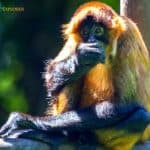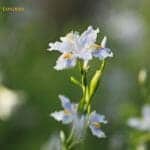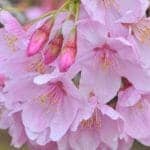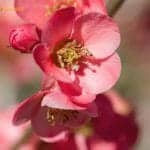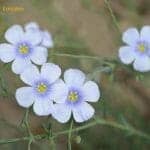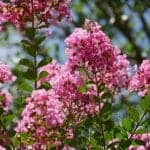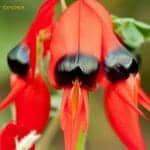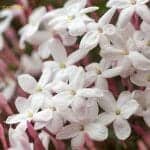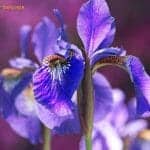flower after flower - search results
If you're not happy with the results, please do another search
Top 21 Facts About Blue Morpho Butterfly
The Blue Morpho butterfly is the most well-known species in the butterfly genus Morpho. Learn the top 21 facts about the Blue Morpho butterfly here.
Elfin Woods Warbler
Shadow, a timid highland insectivore, the Elfin Woods Warbler (Setophaga angelae), narrowly targets mature humid dwarf forest strangely resembling this tiny bird's stunted, wind-sculpted features. Understand why accelerated warming and upslope development threaten to erase prime island refugia critical to this range-restricted species' survival.
Types of Lilies
Discover the stunning beauty of different types of lilies. From oriental hybrids to unique lily species, learn about the diverse world of lily varieties.
Helianthus annuus
Sunflower is the common name of one of the plants in the Helianthus genus in the flowering Asteraceae family (known as the asters, daisies, or sunflower family). The inflorescence is a large disc with a 10 to 30 cm diameter and consists of 16 to 30 golden yellow florets.
Elephant Trunks
Pachypodium namaquanum is a sought-after popular succulent of the Apocynaceae family. These Namib desert flowers are large succulents from Northern Cape and southern Namibia. Elephant trucks are also called "halfmens" because they appear half Tree and half-human.
Coltsfoot
Coltsfoot (Tussilago farfara) is a perennial herb in the Asteraceae (sunflower) family native to North Africa, Europe, and parts of Asia. Coltsfoot is the only recognized species in the Tussilago genus. The bright yellow flowers appear in early spring before the leaves appear.
Chinese Peony
Paeonia lactiflora is a flowering plant that can grow 20-28 inches tall. The Chinese Peony is a perennial herb of the family Paeoniaceae. Peony is named after Paeon, the Greek god of medicine and healing.
California Poppy
The California Poppy (Eschscholtzia californica) became California's official state flower on March 2, 1903. The four-petal desert flowers, borne on stems 8 to 12 inches (20 to 30 cm) long, are typically cream, orange, or pale yellow. Still, cultivars are white and in a variety of pinks and reds.
Calendula
Also known as Gold bloom, Bull's Eyes, Holligold, and the pot of Marigold, Calendula is a radiant face among flower spirits that bloom all summer. Calendula plant is a genus of around 15 species in the Asteraceae family native to the Mediterranean, Central Europe, and Asia
Gas Plant
The gas plant is an old-school classic; the gas plant is an erect, clumping perennial that blooms with small pink or white flowers from late spring to early summer. The flowers (pink or white) and leaves emit a powerful aromatic vapor that can ignite, hence the names of Burning Bush and gas plant.
Matsumoto
The Matsumoto aster (aka Japanese Aster), part of the Chinese aster series, is native to East Asia and is a much sought-after and admired flower. The Matsumoto aster flaunts its always yellow inner flowers by surrounding them with red, purple, lavender, pink, or white flowers, to name a few.
Blood Root
Blood Root (Sanguinaria canadensis), a member of the Papaveraceae (poppy) family, is more tender and beautiful than its general name suggests. The leaf unfolds when flowering. Each pedicel produces single white flower 2-inches wide, 8 to 10 petals, 1.5-inches in diameter, with numerous yellow stamens in the center.
Top 34 Flightless Birds of All Times!
Flightless Birds: Insight into how birds adapted over time to live grounded lives. This article explores major flightless species - from giant moas to tiny kiwis and curious penguins - examining how isolation and lack of predators drove anatomical changes forfeiting skies for land locomotion mastery.
Senegal Parrot
Learn all about the vibrant, social Senegal parrot (Poicephalus senegalus), a popular West African parrot species that thrives in captivity when well-trained. Get information on taxonomy, physical features, reproduction, behavior, communication style, and fun facts.
Mimids
The fabulously playful Mimidae family of Mimids - the mockingbirds, catbirds, thrashers & tremblers of the Americas - is overviewed with facts on evolution, vocal mimicry abilities, behavior, life histories and cultural symbolism of these often supremely talented songsters.
Gibraltar Monkeys
Gibraltar’s iconic Barbary macaques have roamed here 300+ years now, delighting visitors. Explore the history of Gibraltar monkeys on the Rock, their social behavior, role as a conservation priority species with ties to Britain’s fate.
Top Immunology News of 2022
Discover 2022's key immunology breakthroughs: novel asthma treatments, HIV 'memory' cells, mRNA vaccine insights, and allergy research advancements.
Crowned Lemur
Learn about the endangered crowned lemur (Eulemur coronatus) - this medium-sized rainforest-dwelling primate from N. Madagascar has dense black & white fur and a distinctive orange arrowhead crown marking on its forehead.
Mongoose Lemur
Learn about the endangered mongoose lemur (Eulemur mongoz), a small Madagascar primate with red beards and bushy tails. Get fascinating facts on their rainforest habits, unique behaviors, seed dispersal ecology, and major threats driving their worrying decline.
Blue-Eyed Black Lemur
Discover the mysterious blue-eyed black lemur, a rare primate found only in the tropical forests of northwestern Madagascar. With striking blue eyes and mostly black fur, they are agile tree-dwellers feeding on fruits, leaves, and insects. Read about their lifestyle, endangered status, and the threats they face.
Golden Bamboo Lemur
Explore all about the magnificent yet critically endangered golden bamboo lemur of Madagascar. This unique primate depends almost entirely on giant bamboo for food and shelter. Read about their adaptations, ecology, reproduction, conservation efforts, and threats facing their fragile habitat.
Marmoset Monkeys
From the lush Amazon rainforests to the arid caatinga scrubs of northeastern Brazil, miniature marmoset monkeys swing through diverse New World landscapes. Explore all 24 species of marmoset monkeys here.
Goodman’s Mouse Lemur
Explore the world of Goodman's Mouse Lemur (Microcebus lehilahytsara), a unique Madagascar primate, revealing its survival strategies, social behaviors, and conservation needs.
Types of Crows
The Corvidae family, renowned for its intelligence and adaptability, includes crows, ravens, rooks, jackdaws, magpies, and jays. Within this family, the genus Corvus encompasses the "true crows" - a group of 43 recognized crow species found on every continent except South America and Antarctica. These birds are characterized by their robust build, all-black or mostly black plumage, strong bills, and remarkable problem-solving abilities. Crows occupy diverse habitats, from forests and grasslands to cities and islands. Many species are highly social, form complex social structures, and display advanced tool use and vocal mimicry. Their ecological roles range from scavengers to seed dispersers, making them vital to many ecosystems.
Cassin’s Finch
Learn about the Cassin's Finch, a unique songbird of western North American mountain forests. This adaptable finch has complex songs, nomadic habits, and thrives across diverse coniferous habitats. Gain insights into this little-known species' ecology and importance.
Everlasting Daisy
Rhodanthe chlorocephala is a species of daisy native to Australia and belongs to the Asteraceae family. The Everlasting Daisies can be dried and will last for a long time. This is done by hanging the flowers upside down after the cutting. This is best done when the flowers first open.
Japanese Morning Glory
Japanese morning glory is a climber plant with 5 meters. It has been a widely cultivated ornamental garden plant. In addition, growing Ipomoea nil is part of the curriculum of Japanese elementary students.
Japanese Camellia
While many flowering shrubs (Camellia japonica) peak in Summer, the Camellia flower is endemic to Japan and it is unique because it mainly blooms in early spring and late winter. There are nearly 300 species of Camellia, the color of which includes white, pink, and red.
Hibiscus Varieties
Dive into the vibrant world of hibiscus! Explore 25+ stunning varieties, from rare native species to popular garden favorites. Learn about their unique characteristics, care tips, and fascinating facts. Perfect for gardeners and flower enthusiasts alike. Discover the beauty and diversity of these tropical treasures!
Top 15 Evolutionary Biology News of 2022
This series of evolutionary biology news of 2022 gives us a detailed overview of the recent development in this field. Commencing with the evolution of plant colonization on land, the new approach of Neo Darwinism gained importance and more.
Top 15 Biotechnology News of 2022
The 2022 biotechnological innovations paved the way for stem cell therapies, cannabinoid trichomes' roles in plant defense mechanisms, inventory methods to utilize human waste, the role of quick mRNA vaccines and more.
Astilbes
Discover the vibrant world of Astilbes, perennial flowering plants that thrive in the shade. Learn about their unique characteristics, astilbe varieties, care tips, and how they can add a touch of elegance and color to your garden.
Costa Rica Monkeys: A Journey into the Rich Biodiversity!
Explore the diverse world of Costa Rica's monkeys in our comprehensive guide. Learn about the four unique species, their habitats, threats, and conservation efforts. Discover tips for monkey spotting during your visit to this biodiversity hotspot.
Squirrel Corn
Dicentra canadensis is a perennial herb with blue-gray and fernlike foliage. This species belongs to the family Fumeriaceae. The squirrel corns are natives to the east of North America. All parts of the Squirrel Corn plant are toxic only in large quantities. However, it can also cause skin rashes.
Wreath Lechenaultia
Lechenaultia macrantha is a small herbaceous plant from the Goodeniaceae family. It usually grows 150 mm or less. The Wreath Lechenaulta flowers, when viewed from above, show an attractive wreath-like form.
Top 15 Immunology News of 2021
The 2021 discoveries in Immunology showcase the recent developments and their relevance during the upsurge of COVID-19 cases. This treatise describes the development of immunology as a scientific discipline focused on its foundation. Let us glance at these 2021 research outcomes from a broader perspective.
Top 15 Botany News of 2021
Top botany news of 2021 give us a deep insight into our latest advancement in botany and plant science related to the evolutionary aspect, conservation of endemic species, global warming, and the mechanism to fight against them.
Top 15 Ecology News of 2021
This series of 2021 ecology news gives us a detailed overview of the recent development in this field. Commencing with climate change, global warming, alternative ways for renewable energy resources, the role played by scavengers in our society, and other global aspects of management and nature-dependent climate solutions.
Toppin’s Titi
Toppin's Titi (Plecturocebus toppini) is a species of Titi, a species of New World monkey endemic to Bolivia, Peru, and Brazil. It got its name from Captain Toppin, who collected the type specimen of this species near the Tahuamanu River in Peru.
Panamanian White-faced Capuchin
The Panamanian white-faced capuchin (Cebus mimic), also called the Panamanian white-headed capuchin or the Central American white-faced capuchin is a mid-sized New World monkey in the Cebidae family. Native to Central American forests, the Panamanian white-faced capuchin is vital to rainforest ecology for its role in seed and pollen dispersal.
What Do Goldfinches Eat? Explore Goldfinch Diets, Hunting & Eating Habits
Goldfinches are mainly omnivores. Explore in detail what do Goldfinches eat by their types, hunting techniques, what eats Goldfinches & more.
Tufted Gray Langur
The tufted gray langur (Semnopithecus priam), also called the Coromandel sacred langur and the Madras gray langur, is an Old-World monkey, one of the langur species. These langurs are generally shy and only descend when there is no visible danger.
Eastern Gorilla
The eastern gorilla is an endangered species of the Gorilla genus and the largest living primate, with an average length of 150 cm for females and 185 cm for males. Eastern gorillas live in stable and cohesive family groups led by a dominant silverback male.
Common Chimpanzee
The chimpanzee, also known simply as the chimp, is a species of great ape native to the forests and savannas of tropical Africa. Chimpanzees and humans are thought to have a common ancestor that lived about eight million years ago.
Lesser Spotted-Nosed Monkey
The lesser spotted-nosed monkey, lesser spotted monkey, or lesser white-nosed monkey (Cercopithecus petaurista) is a primate species in the Cercopithecidae family. The lesser spotted-nosed monkey is diurnal, arboreal, and cryptic.
Sooty Mangabey
The sooty mangabey, also called the white-collared or white-crowned mangabey is a predominantly terrestrial Old-World monkey. Sooty mangabeys remember the location of the fallen fruit and can tell whether or not a tree is bearing fruit.
Central American Squirrel Monkey
The Central American squirrel monkey also called the red-backed squirrel monkey, is a squirrel monkey type native to the Pacific coast of Panama and Costa Rica. Central American squirrel monkeys spend most of their lives in the middle and upper layers of the tree canopy.
Geoffroy’s Spider Monkey
Geoffroy's spider monkey (Ateles geoffroyi) also called the Central American spider monkey or black-handed spider monkey, is a species of spider monkey. The species name geoffroyi is honored by Étienne Geoffroy Saint-Hilaire, a French naturalist. The Geoffroy's spider monkey consists of five recognized subspecies residing in various parts of Central America and Mexico. These include the Hooded spider monkey (A. g. grisescens) in southern Mexico, the ornately-patterned Ornate spider monkey (A. g. ornatus) in Costa Rica and Panama, the Yucatan spider monkey (A. g. yucatanensis) in the Yucatan Peninsula, the Mexican spider monkey (A. g. vellerosus) in Veracruz, and the nominate Nicaraguan spider monkey subspecies (A. g. geoffroyi) found in Nicaragua, Honduras and northern Costa Rica.
Bald Uakari
The obscure Bald Uakari (Cacajao Calvus) is an acrobatic Amazonian monkey with a flaming red face uniquely adapted to periodically flooded forests. Surprising insights on its taxonomy, specialized seed-based diet, unusual social life, habitat flexibility, and urgent need to conserve diminishing flooded forest habitat across the Amazon Basin.
Snow in Summer
Snow-in-summer (Cerastium tomentosum) offers a solid option for adding botanical beauty to retaining wall crevices and stones in a rock garden. Additional flowering usually occurs in smaller quantities all through the summer.
Japanese Iris
Iris japonica is a rhizomatous plant with a height of 0.75 to 1 foot and a spread of 1 to 1.5 feet that can grow in forest margins and wet grasslands. The Japanese Iris is named after the Greek goddess "Iris" because of its beauty. The name Iris also means rainbow.
Japanese Cherry Blossom
Cherry blossom (Japanese national flower) is a medium-sized tree that can grow to 15-25 feet. The spread is 4-8 meters. The tree is short-lived (15-20 years). It is native to Korea, China, and Japan. Cherry blossom signifies good luck, Love, and femininity.
Saffron
The saffron flower is single and terminal, purple, and comprises 6 petals, 3 stamens, and a style that ends with 3 orange-red stigmas. Unlike other blossoms of the same genus, saffron blossoms do not close overnight. Saffron is a spice extracted from the flower of Crocus sativus, also known as saffron crocus.
Quince
The quince (Cydonia oblonga) is the only member of the genus Cydonia in the Rosaceae family (including pears and apples). These Japanese trees have been cultivated by landscape architects for their showy pale pink flowers and other ornamental features.
Perennial Flax
Linum perenne, commonly known as perennial flax, is a short-lived perennial shrub native to Europe that generally grows 1 to 2 feet tall. Linum is a genus of around 200 species of flowering plants. It blooms profusely for up to eight weeks in late spring. The sky-blue flowers open early in the sunny mornings, but the petals usually fall in the late afternoon.
Myrsine
Myrsine is a genus of plants in the Primulaceae family. It was previously placed in the Myrsinaceae family before merging with the Primulaceae. Myrsine africana has small white to pink flowers in spring followed by purple/bright red berries.
Leadwort
The name Leadwort may not sound flattering, but this beautiful, hardworking perennial always deserves a place in a home garden. The terminal clumps of five-petalled gentian blue flowers (1/2 to 3/4 inch in diameter) appear on the foliage during a long flowering period from summer to frost.
Clianthus
Also known as a lobster claw, Clianthus is a bushy, small, evergreen shrub native to New Zealand's North Island from the Fabaceae (legume) family. In late spring and early summer, Clianthus produces groups of 15 to 25 red to bright pink waxy flowers that are 3-inches long.
Jasmine
Jasmine (Jasminum polyanthum) is a genus of vines and shrubs in the Oleaceae (olive) family. The flowers are usually 2.5cm in diameter and come in shades of yellow and white.
Iris
The beautiful and tall iris, named after the Greek goddess who rode the rainbow, is available in several magical colors. Notwithstanding its divine origins, this late bloomer is reliable, hardy, and easy to grow. Iris flowers are brown, blue, purple, pink, orange, yellow, lavender, and white.


